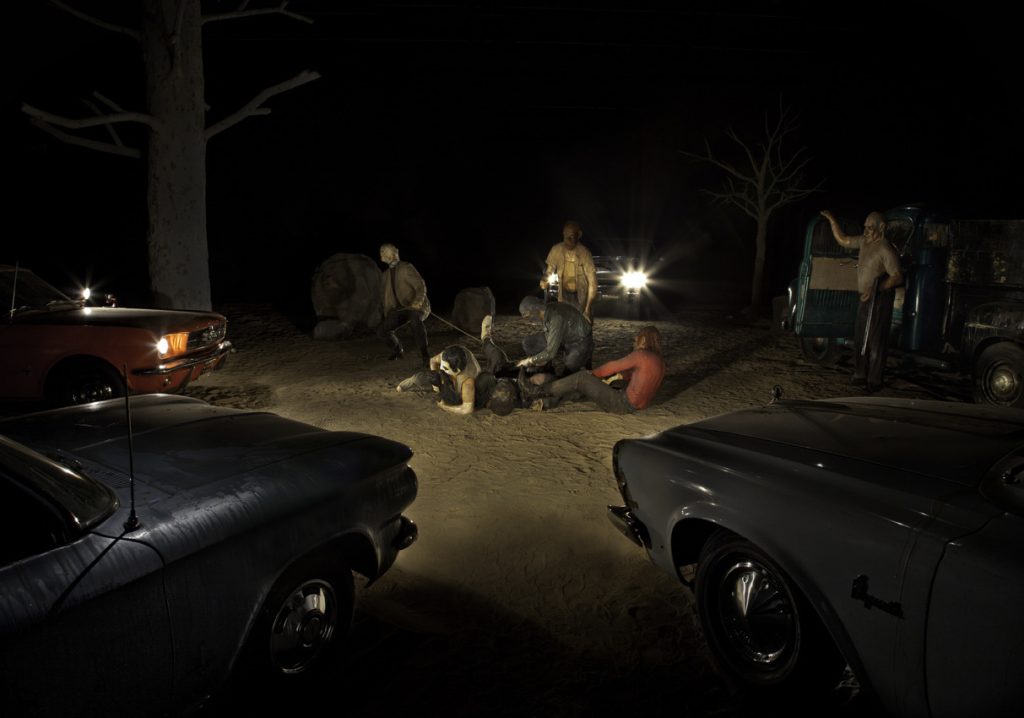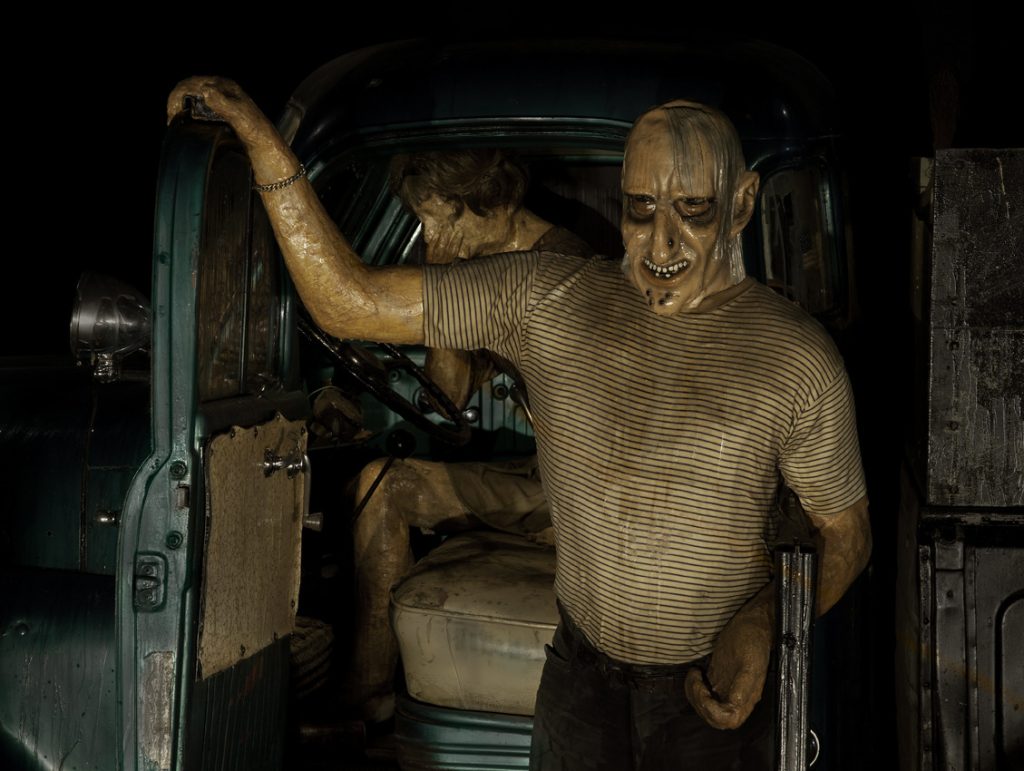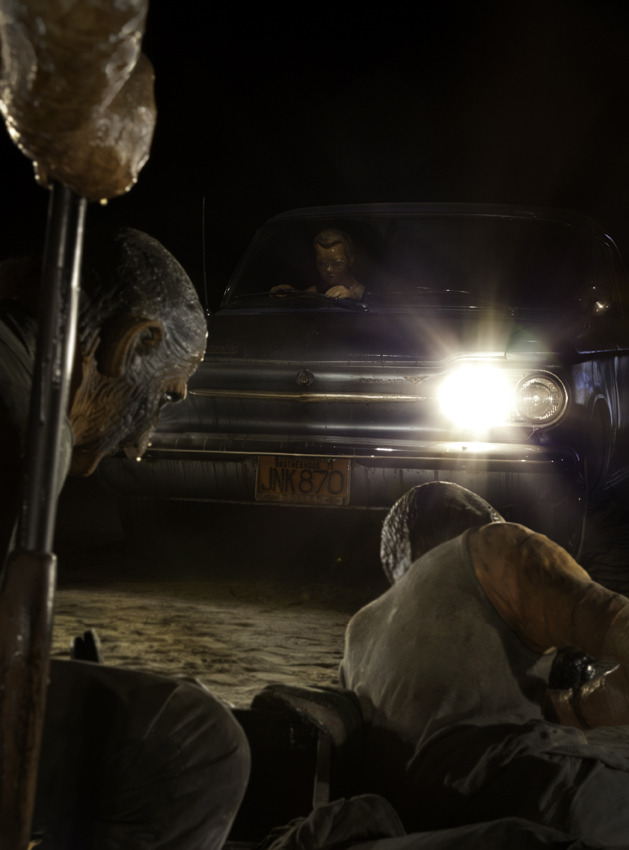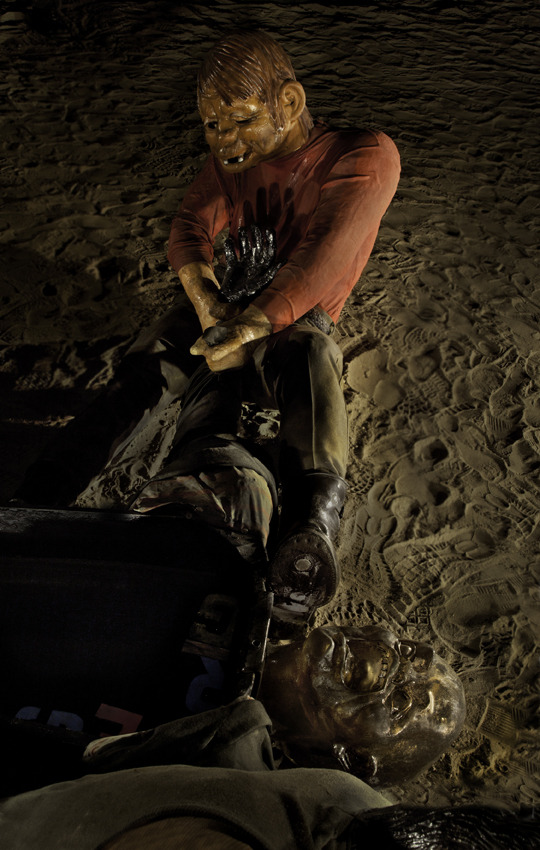





“If six to one odds is unfair in my tableau, than 170 million to 20 million is sure as hell unfair odds in my country.” - Edward Kienholz
American assemblage and installation artist Edward Kienholz’s life-sized tableau Five Car Stud (1969-1972) depicts a gruesome scene of racial violence, and is a reminder of this country’s shameful history of
intolerance. This seminal work in Kienholz’s oeuvre is the centerpiece of Fondazione Prada’s current exhibition, which presents this major tableau, along with a wide variety of works created over four decades by Edward and Nancy Reddin Kienholz. With Five Car Stud’s nearly forty-year disappearance from the public eye, and Fondazione Prada’s extension of the exhibition in Milan until April 2017, we take this opportunity to analyze this sadly timeless work.
Five Card Stud is the name of a Civil War-era poker game. As opposed to previous forms of the game where a player’s cards were kept private, here four out the five cards are visible to everyone. Perhaps this openness reflects on the blatant racism present in the scene. Five Card Stud is also the name
of a 1968 Western film starring Dean Martin about a group of gamblers who lynch a cheating player after a Five Card Stud poker game goes awry.
The installation invites the viewer into a circle of five cars, their headlights directed at a group of white men violently restraining and castrating an African-American man, while his Caucasian date watches in horror from his truck. The attackers’ faces are concealed with ghoulish Halloween masks, but their bodies are depicted realistically, holding down the victim, or standing on guard with guns. The African-American man is a more abstracted figure. His torso is fashioned out of a car’s oil pan in which floating plastic letters can spell out a racial slur. His head is made from a wax head (used by the US Army to demonstrate the mal-effects of syphilis) encased in plastic, creating a duality in his expression. His outer face reflects pure horror and pain, while the inner face is resigned, full of sadness.
There are no spectators or innocent bystanders when experiencing Five Car Stud. Rather, each person enters the nighttime environment, feels the dirt give way softly beneath their feet, blinks to readjust their vision to the darkness and blinding headlights, hears the music swell from the radio of the victim’s truck, and eventually finds themselves in the middle of the scene, implicated in the central horror taking place. This visceral immersion serves as needed reminder of the United States’ checkered past with race relations including the Jim Crow laws, Japanese internment camps, and the government’s exploitation of Native Americans. It also evokes feelings and questions that arise with any incident of violent victimization, institutional or otherwise, be it sparked by racial, LGBT, anti-immigrant or religious prejudice.
As a searing indictment of the United States, Five Car Stud was the last work Kienholz completed in Los Angeles before moving to Berlin. Prior to leaving, he installed the piece in print studio Gemini G.E.L.’s parking lot to be photographed for a limited-edition book.
Kienholz met his future wife and partner, Nancy, soon after completing the work. She had much to say about the piece. She revealed, “If your sympathy is with the plight of people, it’s a tough piece to deal with. You will be confronted by it. Don’t expect to walk in it and be too comfortable. I find it scary, and I’m used to it.” Fondazione Prada curator Germano Celant wrote that “Five Car Stud is a terrifying scene that reflects the contradictions of a society that professes equality and freedom but does not accept the other.” He continued, “Kienholz seeks to break down the certainties and controlled state of mind of members of the art-viewing public. He is attempting to destabilize their emotions, inviting them to engage in a reflection at once social and noble with respect to racial violence.”
First exhibited at Documenta V in Kassel in 1972, a Japanese collector soon bought the piece, and it was kept in storage for nearly forty years. The viewing public regained access to this work in 2012 with exhibitions at the Los Angeles County Museum of Art and the Louisiana Museum of Modern Art in Denmark. Fondazione Prada is now home to this eye-opening piece; this exhibition marks the first time the work has been seen in Italy. Now that the exhibition has been extended into the new year, hopefully many more people will be able to view it and learn from errors of the past.
Kienholz: Five Car Stud is on view at Fondazione Prada in Milan until April 9, 2017. For more information, please go to fondazioneprada.org
